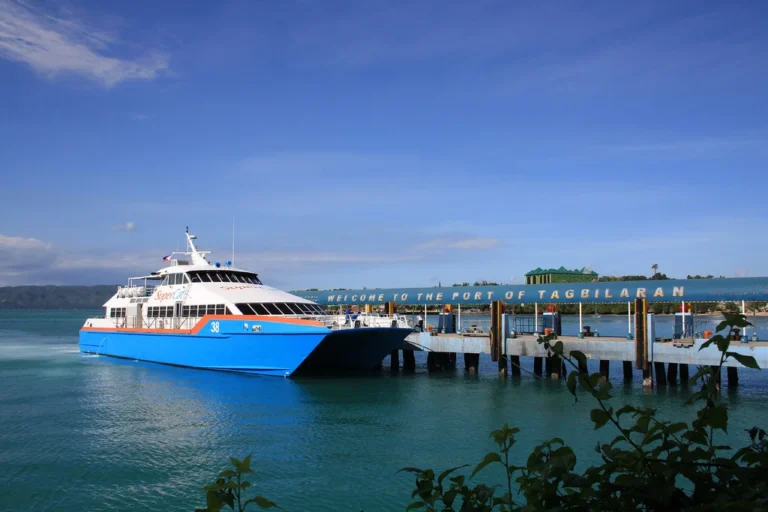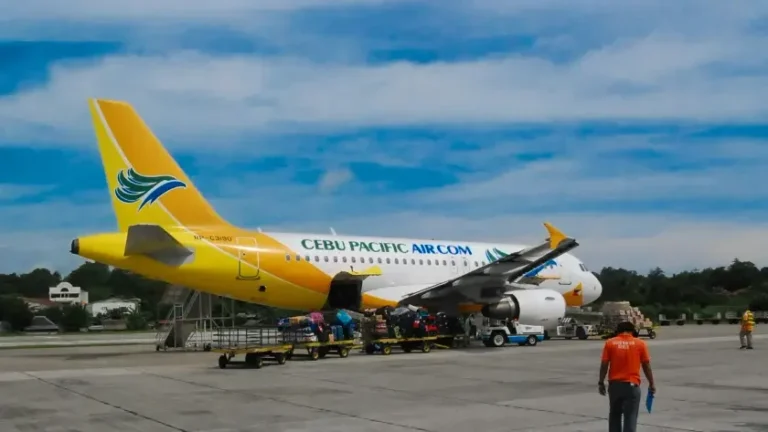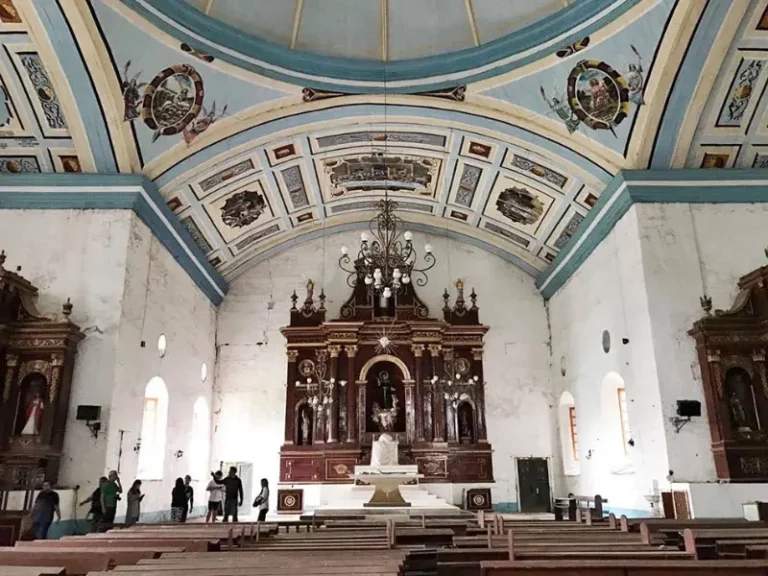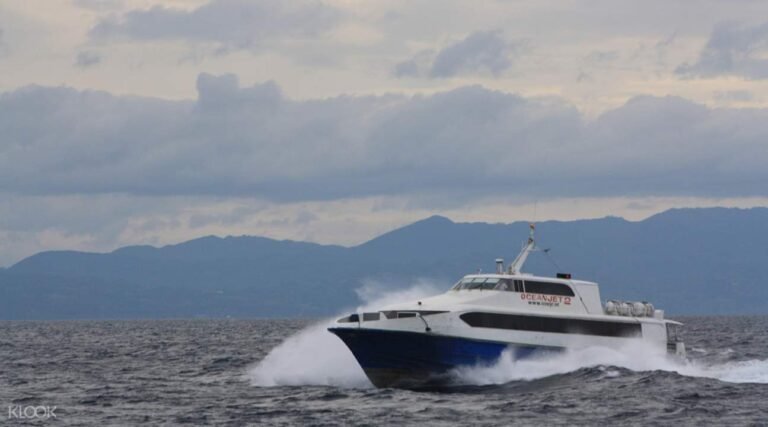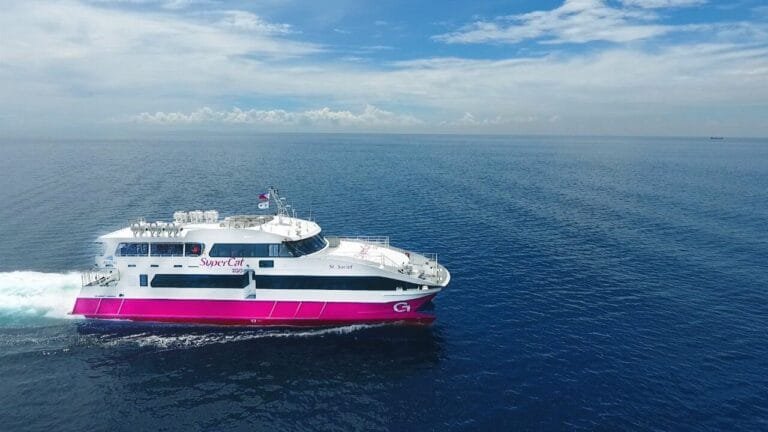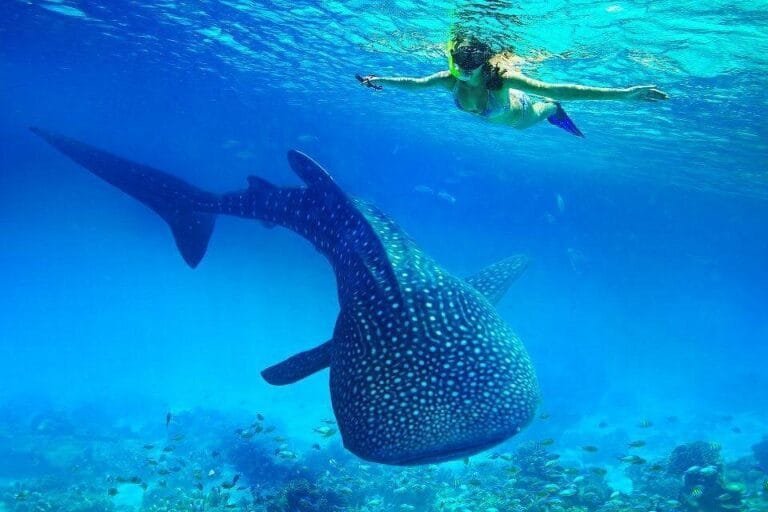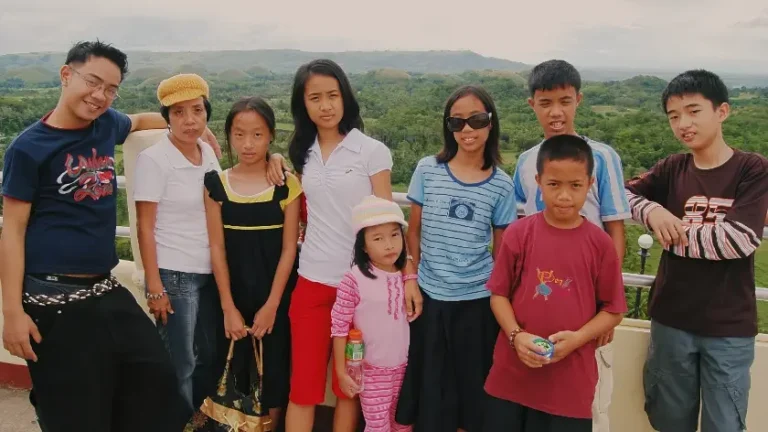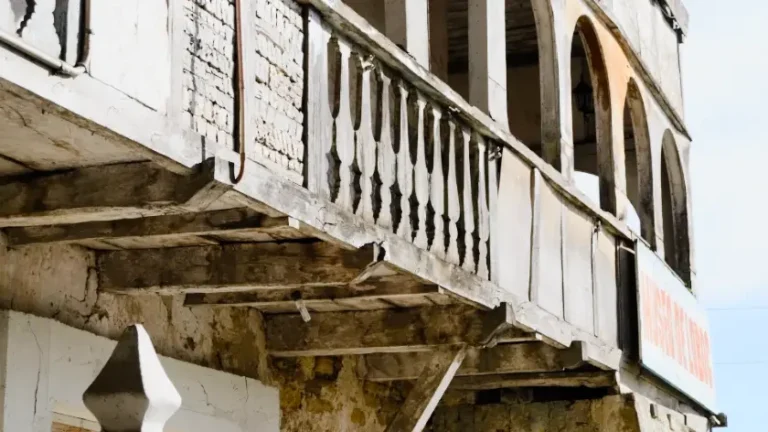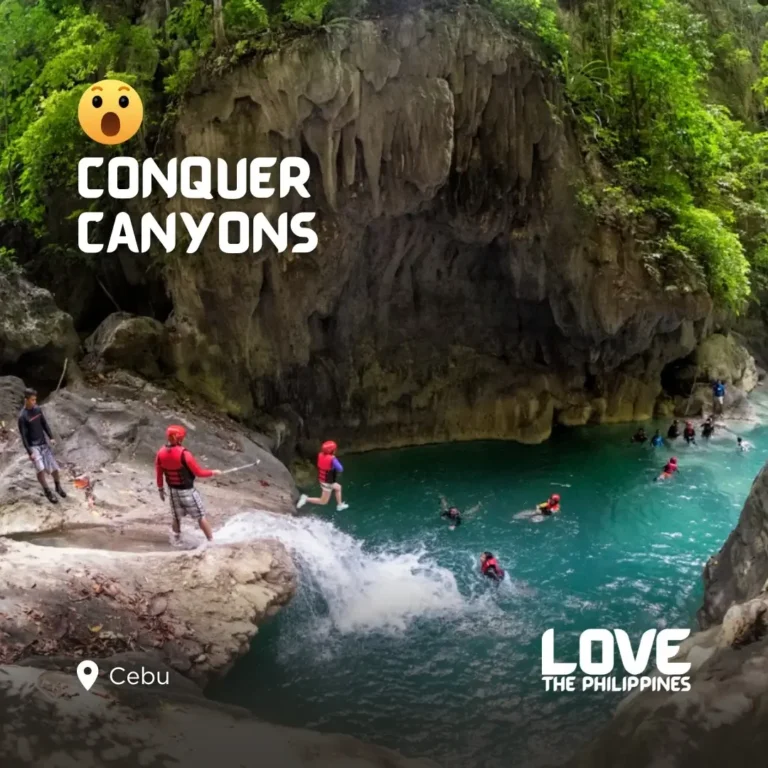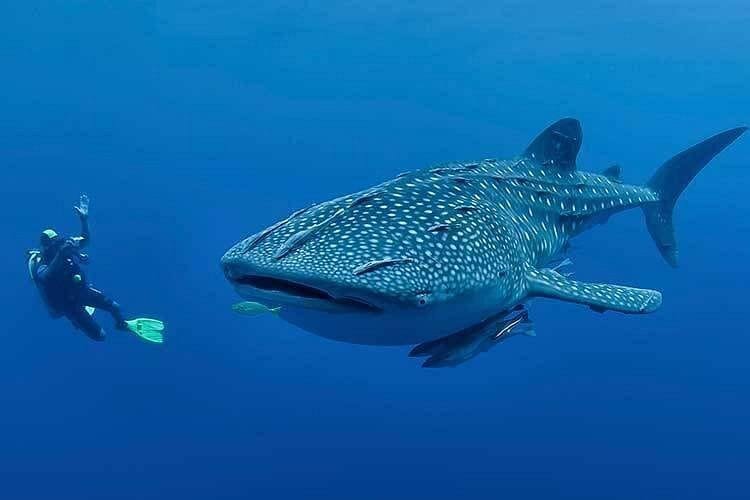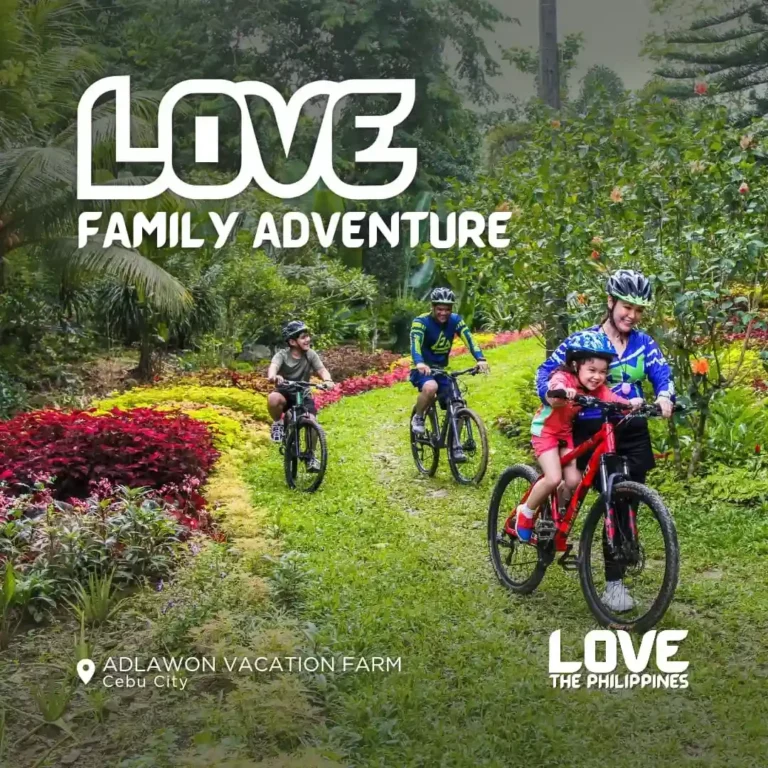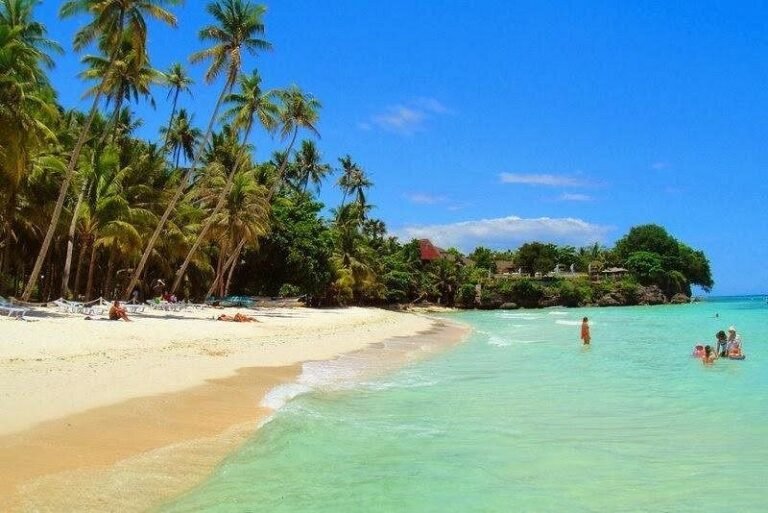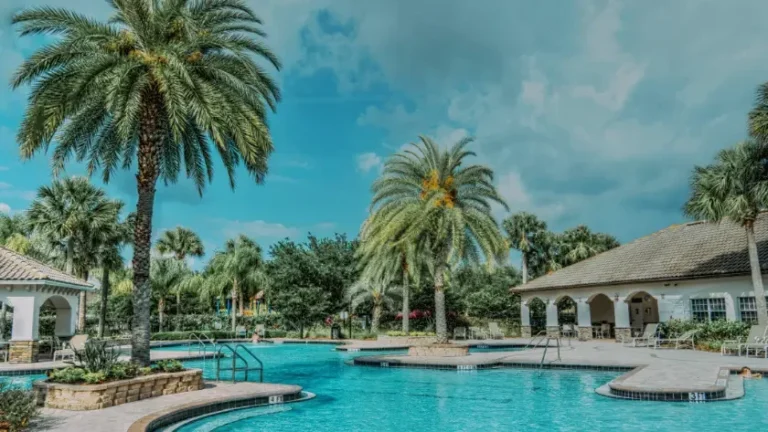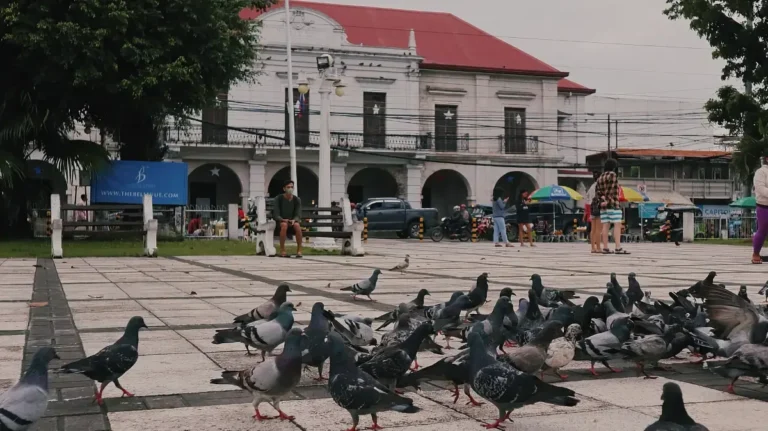Welcome to Bantayan Island, Northern Cebu’s pristine paradise where powdery white sand beaches stretch for kilometers and crystal-clear waters rival the world’s most famous tropical destinations.
This 61-square-kilometer island has quietly emerged as the Philippines’ best-kept secret for authentic beach experiences, combining stunning natural beauty with rich cultural heritage and genuine Filipino hospitality.
With the recent opening of Bantayan Airport transforming accessibility, Virgin Island’s cliff-jumping adventures just a boat ride away, and three distinct municipalities each offering unique experiences, Bantayan provides the perfect escape from crowded tourist destinations.
Whether you’re seeking romantic sunsets, family-friendly beaches, adventure-packed day trips, or cultural immersion during colorful local festivals, this comprehensive guide reveals everything you need to experience Bantayan Island like a local insider.
Revolutionary Access – Airport vs. Ferry Complete Comparison
The opening of Bantayan Airport in 2024 has fundamentally changed how travelers reach this paradise island, creating new possibilities while traditional ferry routes remain viable alternatives. Understanding the complete cost-time-convenience analysis helps you choose the optimal access method for your travel style and budget.
New Bantayan Airport Access (2024+)
Flight Details & Schedule:
- Airport code: SFE (Bantayan Airport)
- Airlines: Cebu Pacific, Philippine Airlines (limited routes)
- From Manila: 2.5 hours direct flight, ₱6,500-₱12,000 one-way
- From Cebu City: 45 minutes flight, ₱3,500-₱6,500 one-way
- Frequency: 3-5 flights weekly (varies by season)
- Aircraft: Small regional planes, 50-70 passenger capacity
Airport Infrastructure:
- Terminal: Modern but compact facility
- Ground transport: Tricycles, vans, motorbike rentals available
- Distance to Santa Fe: 20 minutes by road
- Distance to Virgin Island: 25 minutes to jump-off point
- Amenities: Basic services, limited food options, no ATM yet
Flight Access Advantages:
- Time savings: Direct to island vs. 6+ hours via ferry
- Weather independence: Less affected by sea conditions
- Luggage convenience: Standard airline baggage handling
- Comfort: Air-conditioned, no seasickness risk
- Prestige: Exclusive access method, fewer tourists
Flight Access Disadvantages:
- Limited schedules: Few daily flights, advance booking essential
- Higher cost: 3-5x more expensive than ferry routes
- Weather delays: Small planes affected by strong winds/storms
- Baggage restrictions: Strict weight limits on small aircraft
- Remote feel: Less adventurous than traditional island approach
Traditional Ferry Route Analysis
Primary Route: Hagnaya Port to Santa Fe
- Departure point: Hagnaya Port, Bogo City (4 hours drive from Cebu City)
- Ferry duration: 1.5-2 hours depending on boat type and weather
- Ferry frequency: Every 2-3 hours, 6:00 AM – 5:00 PM
- Cost: ₱35-₱80 per person, ₱15-₱30 per motorbike
- Total journey: 6-7 hours from Cebu City including all connections
Alternative Route: Toledo to Hagnaya
- Distance: Shorter land travel from Cebu City (3 hours)
- Ferry options: Multiple operators, more frequent departures
- Cost advantage: Slightly cheaper overall journey
- Time difference: 30-60 minutes faster than northern route
- Comfort level: Similar ferry conditions, better road access
Complete Cost-Time-Convenience Analysis
Budget Traveler Comparison (1-2 people):
| Route | Total Time | Total Cost | Convenience Rating |
| Manila → Bantayan Airport | 4-5 hours | ₱8,000-₱15,000 | ★★★★★ |
| Manila → Cebu → Ferry | 8-10 hours | ₱4,500-₱7,000 | ★★☆☆☆ |
| Cebu City → Bantayan Airport | 2-3 hours | ₱4,000-₱7,500 | ★★★★★ |
| Cebu City → Ferry Route | 6-7 hours | ₱800-₱1,500 | ★★★☆☆ |
Family/Group Comparison (4+ people):
| Route | Total Time | Cost per Person | Group Benefits |
| Charter Flight | 2-3 hours | ₱12,000-₱18,000 | Private, flexible timing |
| Commercial Flight | 2-4 hours | ₱4,000-₱8,000 | Fast, comfortable, luggage ease |
| Private Van + Ferry | 6-8 hours | ₱2,000-₱3,500 | Cost-effective, group bonding |
| Public Transport + Ferry | 7-9 hours | ₱800-₱1,500 | Cheapest, local experience |
Seasonal Access Considerations
Peak Season (December-May) Access Strategy:
- Flight booking: Reserve 60-90 days ahead, prices increase 40-60%
- Ferry capacity: Crowded conditions, longer waiting times
- Road conditions: Heavy traffic to ferry ports during holidays
- Recommendation: Flight access worth premium during peak periods
Off-Season (June-November) Access Options:
- Flight availability: Reduced schedules, some routes suspended
- Ferry reliability: Weather-dependent cancellations possible
- Cost advantages: Flight prices drop 20-30%, ferry unchanged
- Recommendation: Ferry route more reliable, significant cost savings
Festival Period Access (Easter, Christmas):
- Flight booking: Essential 90+ days ahead, premium pricing
- Ferry chaos: Extreme crowding, 2-3x normal travel times
- Accommodation: Must book with transport for guaranteed access
- Alternative: Consider festival participation vs. avoiding crowds
Luggage & Equipment Considerations
Flight Luggage Advantages:
- Standard allowance: 7kg carry-on, 20kg checked (varies by airline)
- Equipment friendly: Diving gear, photography equipment safer
- No weather damage: Protected from sea spray, rain during ferry crossings
- Quick retrieval: Standard airport baggage handling
Ferry Luggage Realities:
- No weight limits: Bring as much as you can physically handle
- Weather exposure: Risk of water damage during rough crossings
- Manual handling: You carry everything, no assistance
- Storage challenges: Limited secure storage during crossing
Weather Impact on Access Methods
Flight Weather Vulnerabilities:
- Wind sensitivity: Small planes affected by crosswinds at Bantayan Airport
- Visibility requirements: Fog or heavy rain can delay/cancel flights
- Storm closures: Airport closes during typhoon warnings
- Alternative planning: Always have ferry backup plan during storm season
Ferry Weather Dependencies:
- Sea conditions: Rough seas delay or cancel ferry services
- Seasonal patterns: July-October most challenging for crossings
- Safety protocols: Ferries suspended during storm warnings
- Alternative options: Multiple ferry operators provide backup routes
✈️ Choose Your Perfect Bantayan Access ✅ New airport offers 4-5x faster access vs. ferry routes 🚢 Ferry route provides authentic adventure at budget prices ✈️ Flights essential during peak season and festivals
💰 Ferry saves ₱3,000-₱8,000 per person vs. flying ⏰ Peak season flight booking required 60-90 days ahead! 👉 [Book Bantayan Flights] | [Compare Ferry Schedules] | [Plan Multi-Route Access] – Your island paradise access sorted!
Municipality Guide – Santa Fe, Bantayan Town & Madridejos Decoded
Understanding Bantayan Island’s three municipalities is crucial for choosing the right location base, as each offers distinct experiences, accommodation types, and proximity to different attractions. This detailed breakdown eliminates confusion and helps you select the perfect area for your travel style.
Santa Fe Municipality – Tourism Headquarters
Geographic Overview:
- Location: Southern portion of Bantayan Island
- Size: Smallest municipality but highest tourism concentration
- Coastline: Western beaches with stunning sunset views
- Population: 28,000 residents, significantly higher during peak season
Why Choose Santa Fe: Best for: First-time visitors, beach lovers, sunset enthusiasts, convenience seekers
- Beach access: Direct access to Kota Beach and Sugar Beach
- Tourism infrastructure: Most hotels, restaurants, tour operators
- Sunset views: Western coastline offers spectacular daily sunsets
- Airport proximity: 20 minutes from new Bantayan Airport
- Ferry access: Santa Fe Port for most convenient ferry arrivals
Santa Fe Beach Breakdown:
Kota Beach – The Main Event
- Length: 2.5 kilometers of white sand
- Best features: Iconic sandbar, palm tree-lined shore, shallow swimming
- Infrastructure: Beach bars, restaurants, loungers, umbrellas available
- Activities: Swimming, beach volleyball, photography, sunset watching
- Crowds: Busiest beach, especially weekends and holidays
- Best times: Early morning (6-8 AM) and sunset (5-7 PM) for photos
Sugar Beach – The Quieter Alternative
- Location: Adjacent to Kota Beach, slightly north
- Character: Less developed, more natural setting
- Activities: Swimming, snorkeling, beachcombing
- Crowds: Significantly quieter than Kota Beach
- Facilities: Limited infrastructure, bring your own provisions
- Best for: Those seeking peace while staying in Santa Fe area
Santa Fe Accommodation Categories:
Luxury Beach Resorts (₱8,000-₱15,000/night):
- Amihan Beach Cabanas: Premium beachfront, traditional nipa hut style
- Anika Island Resort: Modern amenities, pools, spa services
- Features: Direct beach access, full-service restaurants, tour arrangements
- Best for: Luxury travelers, special occasions, full-service expectations
Mid-Range Beach Hotels (₱3,000-₱7,000/night):
- Santa Fe Beach Resort: Established property, good facilities
- Kota Beach Resort: Central location, reliable amenities
- Features: AC rooms, restaurants, tour desks, reasonable comfort
- Best for: Most travelers seeking comfort with value
Budget Beach Access (₱1,200-₱2,500/night):
- Bantayan Island Nature Park & Resort: Basic but beachfront location
- Various guesthouses: Local family-run operations
- Features: Fan or basic AC, shared or private bath, local atmosphere
- Best for: Budget travelers prioritizing location over amenities
Bantayan Town (Poblacion) – Cultural & Historical Center
Geographic Overview:
- Location: Central-northern portion, administrative capital
- Size: Largest municipality, most developed infrastructure
- Character: Traditional Filipino town with colonial influences
- Population: 142,000 residents, authentic local life
Why Choose Bantayan Town: Best for: Cultural enthusiasts, history buffs, authentic local experience, budget travelers
- Cultural sites: Historic churches, colonial architecture, local markets
- Local life: Genuine Filipino town experience, minimal tourism impact
- Infrastructure: Government offices, banks, hospitals, major services
- Budget options: Cheapest accommodation and dining on island
- Transport hub: Central location for exploring entire island
Cultural & Historical Attractions:
Saints Peter and Paul Parish Church
- Built: 1580s, one of Philippines’ oldest churches
- Architecture: Spanish colonial design, recently restored
- Significance: Important pilgrimage site, Easter celebrations
- Visit details: Free entry, respect dress codes, photography allowed
- Best time: Sunday mass for authentic local experience
Bantayan Museum
- Location: Town center, walking distance from church
- Exhibits: Local history, cultural artifacts, religious items
- Entry: ₱50-₱100 per person
- Duration: 1-2 hours for complete visit
- Best for: Understanding island culture and history
Public Market Experience
- Location: Town center, daily operations 6 AM – 6 PM
- Highlights: Fresh seafood, local produce, dried fish specialties
- Culture: Authentic Filipino market atmosphere
- Timing: Early morning (6-8 AM) for freshest selections
- Bargaining: Expected and welcomed for non-food items
Bantayan Town Accommodation:
Heritage & Cultural Hotels (₱2,500-₱5,000/night):
- Bantayan Island Heritage Hotel: Colonial charm, historical setting
- Features: Traditional architecture, cultural tours, local cuisine
- Best for: Cultural immersion, history enthusiasts
Budget Town Hotels (₱800-₱2,000/night):
- Various pension houses: Family-run, basic amenities
- Features: Fan or basic AC, shared facilities, local atmosphere
- Best for: Extreme budget, cultural authenticity, longer stays
Madridejos Municipality – The Adventure Gateway
Geographic Overview:
- Location: Northern tip of Bantayan Island
- Size: Medium-sized, least touristy municipality
- Character: Fishing community, agricultural area, authentic local life
- Coastline: Multiple beaches, less developed, more natural
Why Choose Madridejos: Best for: Adventure seekers, off-the-beaten-path travelers, Virgin Island access
- Virgin Island proximity: Closest municipality to Virgin Island jump-off
- Authentic experience: Minimal tourism development, genuine local life
- Adventure access: Easy access to island hopping, fishing trips
- Budget advantage: Cheapest prices across all categories
- Uncrowded beaches: Beautiful beaches with minimal tourist presence
Madridejos Attractions & Activities:
Kangkaibe Beach
- Character: Long stretch of white sand, minimal development
- Activities: Swimming, beachcombing, fishing with locals
- Facilities: Very limited, bring provisions
- Crowds: Almost deserted except for local fishermen
- Best time: Sunrise viewing, afternoon fishing
Tarong Beach
- Location: Northwestern coast, protected bay
- Features: Calm waters, excellent for families with children
- Local life: Working fishing beach, observe daily life
- Activities: Swimming, fishing, cultural interaction
- Access: 15 minutes from Madridejos town center
Virgin Island Jump-off Point
- Location: Various points along Madridejos coast
- Boat arrangements: Local fishermen offer transport services
- Cost: ₱2,500-₱4,000 for private boat (up to 8 people)
- Duration: 15-20 minutes boat ride to Virgin Island
- Best timing: Early morning departure for day trips
Madridejos Accommodation Options:
Local Guesthouses (₱600-₱1,500/night):
- Family-run operations: Basic but clean, local hospitality
- Features: Fan cooling, shared or private bath, home-cooked meals available
- Best for: Budget travelers, cultural immersion, adventure base
Fishing Lodge Style (₱1,000-₱2,500/night):
- Character: Simple but comfortable, fishing trip arrangements
- Features: Basic AC, local guide connections, boat arrangements
- Best for: Fishing enthusiasts, Virgin Island access, adventure travelers
Strategic Municipality Selection Guide
First Visit Strategy: Choose Santa Fe for convenience, established tourism infrastructure, and easy access to main attractions
Extended Stay Strategy: Start in Santa Fe (2-3 nights), explore Bantayan Town for culture (1-2 nights), end in Madridejos for Virgin Island adventures
Family Strategy: Santa Fe provides safest beaches, most amenities, reliable infrastructure for children
Budget Strategy: Bantayan Town offers lowest costs with authentic local experience
Adventure Strategy: Madridejos provides Virgin Island access, fishing opportunities, off-beaten-path experiences
Cultural Strategy: Bantayan Town for historical sites, local markets, authentic Filipino town life
Luxury Strategy: Santa Fe has most high-end resorts, full-service amenities, sunset beach access
Inter-Municipality Transportation
Jeepney Routes:
- Santa Fe ↔ Bantayan Town: ₱20-₱30 per person, 30-45 minutes
- Bantayan Town ↔ Madridejos: ₱25-₱35 per person, 45-60 minutes
- Direct Santa Fe ↔ Madridejos: ₱40-₱60 per person, 1-1.5 hours
- Frequency: Every 30-60 minutes during daylight hours
Tricycle Private Hire:
- Any route: ₱200-₱500 depending on distance and waiting time
- Advantages: Direct transport, luggage accommodation, flexible timing
- Best for: Groups, luggage transport, time-sensitive travel
Motorbike Rental Freedom:
- Cost: ₱400-₱600 per day across all municipalities
- Advantages: Complete freedom, scenic route access, photo stops
- Requirements: Valid license, helmet use, fuel costs (₱200-₱400/day)
- Best for: Independent travelers, couples, scenic exploration
🏘️ Choose Your Perfect Bantayan Municipality Base
✅ Santa Fe: Tourism hub, sunset beaches, maximum convenience
🏛️ Bantayan Town: Cultural sites, authentic life, lowest prices
🎣 Madridejos: Virgin Island access, fishing adventures, off-beaten-path
🚌 Easy inter-municipality transport connects all areas
⏰ Consider 2+ municipalities for complete island experience!
👉 [Book Santa Fe Beachfront] | [Find Bantayan Town Culture] | [Reserve Madridejos Adventures] – Your perfect island base awaits!
Virgin Island Ultimate Adventure Guide – Complete Logistics & Experience
Virgin Island represents Bantayan’s crown jewel – a pristine sandbar paradise offering cliff jumping, snorkeling, and Robinson Crusoe-style experiences just 20 minutes by boat. Understanding the complete logistics, pricing structures, and experience optimization transforms this from a simple day trip into an unforgettable adventure.
Virgin Island Overview & What Makes It Special
Geographic Details:
- Official name: Silion Island (Virgin Island is the tourism name)
- Size: 0.8 hectares (2 acres), varies with tides
- Formation: Natural sandbar with rocky cliff formations
- Water depth: 2-8 meters around the island, perfect for swimming
- Distance: 15-20 minutes by bangka boat from Madridejos or Santa Fe
Unique Features That Set Virgin Island Apart:
- Pristine sandbar: Pure white sand that appears/disappears with tides
- Cliff jumping spots: Multiple jump heights from 3-8 meters
- Crystal-clear water: Visibility 15-25 meters, perfect for snorkeling
- Untouched nature: No permanent structures, no electricity, pure paradise
- Tidal dynamics: Island changes shape and size throughout the day
- Marine life: Tropical fish, occasional sea turtles, healthy coral
Complete Virgin Island Logistics Guide
Boat Access Options:
Option 1: Private Boat Charter from Madridejos
- Cost: ₱2,500-₱4,000 for entire boat (up to 8 people)
- Duration: 15-20 minutes each way
- Advantages: Flexible timing, private experience, luggage security
- Boat types: Traditional bangka with outriggers, motor-powered
- Booking: Arrange through accommodation or directly with fishermen
- Best for: Groups, families, those wanting flexible schedules
Option 2: Private Boat Charter from Santa Fe
- Cost: ₱3,500-₱5,500 for entire boat (up to 8 people)
- Duration: 25-30 minutes each way
- Advantages: Convenient if staying in Santa Fe area
- Additional stops: Often includes other small islands
- Booking: Through tour operators or beach resorts
- Best for: Hotel guests, those prioritizing convenience
Option 3: Shared Boat Tours
- Cost: ₱800-₱1,500 per person including lunch
- Duration: Full day (6-8 hours) with multiple stops
- Includes: Island hopping, snorkeling gear, lunch, guide
- Group size: 8-15 people typically
- Schedule: Fixed departure/return times
- Best for: Solo travelers, budget-conscious, social experience
Option 4: Resort-Organized Tours
- Cost: ₱2,000-₱3,500 per person including premium services
- Includes: Premium boat, professional guide, equipment, gourmet lunch
- Advantages: Hassle-free booking, quality assurance, insurance coverage
- Additional services: Photography, snorkeling instruction, safety briefing
- Best for: Luxury travelers, special occasions, peace of mind
Virgin Island Experience Optimization
Ideal Timing Strategies:
Low Tide Advantages (Best for landing and beach activities):
- Timing: Check local tide charts, varies daily
- Benefits: Maximum sandbar exposure, easy boat landing, wider beach area
- Activities: Beach walking, sunbathing, photography, shell collecting
- Duration: 2-3 hours of optimal beach conditions
High Tide Advantages (Best for water activities):
- Benefits: Deeper water for jumping, better snorkeling access, cooler swimming
- Activities: Cliff jumping, snorkeling, diving, water sports
- Safety: Easier boat access, less rocky areas exposed
- Duration: 2-4 hours of optimal water activities
Full Day Strategy (8+ hours):
- Schedule: Arrive at low tide, experience high tide, return at low tide
- Activities: Beach exploration → cliff jumping → snorkeling → relaxation
- Meals: Bring picnic or arrange BBQ setup with boat operator
- Equipment: Sun shelter, plenty of water, entertainment for longer stays
Activity Breakdown & Safety Guidelines
Cliff Jumping Experience:
- Jump heights: 3 meters (beginner), 5 meters (intermediate), 8 meters (advanced)
- Safety requirements: Swimming ability test, guide supervision, depth check
- Technique instruction: Proper form, entry angle, safety precautions
- Age restrictions: 12+ for low jumps, 16+ for high jumps, adult supervision required
- Safety equipment: Life jackets available, first aid kit on boats
- Insurance: Verify coverage, sign liability waivers
Snorkeling & Marine Life:
- Equipment included: Mask, snorkel, fins in most packages
- Marine highlights: Tropical fish varieties, occasional sea turtles, healthy coral
- Best spots: Southeast side of island, around rocky areas
- Depth range: 3-12 meters, suitable for all experience levels
- Safety guidelines: Buddy system, stay within designated areas, respect marine life
Beach & Relaxation Activities:
- Sandbar exploration: Changes throughout day with tides
- Photography: Drone restrictions apply, check current regulations
- Beach games: Volleyball, frisbee, card games during relaxation time
- Shade options: Bring umbrellas/tents, no natural shade on sandbar
- Comfort items: Beach mats, cushions, coolers for extended stays
Essential Packing for Virgin Island
Must-Bring Items:
- Sun protection: Reef-safe sunscreen (SPF 50+), long-sleeve rash guard, hat
- Water & hydration: 2-3 liters per person minimum, electrolyte drinks
- Snacks & meals: No food available on island, plan all meals
- First aid basics: Bandages, antiseptic, pain relievers, motion sickness medication
- Waterproof bags: Protect phones, cameras, valuables from water/salt
Comfort & Entertainment:
- Beach shelter: Pop-up tent or large umbrella for shade
- Seating: Inflatable cushions, beach mats, portable chairs
- Entertainment: Cards, books, music speakers (respect others)
- Photography: Underwater camera, extra batteries, memory cards
- Communication: Fully charged phones, portable phone chargers
What NOT to Bring:
- Glass containers: Safety hazard, environmental concern
- Single-use plastics: Environmental protection, bring reusables
- Valuable jewelry: Saltwater damage, loss risk during activities
- Heavy equipment: Space limited on boats, focus on essentials
Virgin Island Pricing Analysis
Budget Day Trip (₱1,200-₱2,000 per person):
- Includes: Shared boat transport, basic snorkeling gear, simple lunch
- Duration: 6-8 hours including transport time
- Group size: 10-15 people
- Value rating: ★★★☆☆ – Good introduction, basic experience
Premium Day Trip (₱2,500-₱4,000 per person):
- Includes: Private or small group boat, quality gear, gourmet lunch, guide
- Duration: 8-10 hours with flexible timing
- Group size: 6-8 people maximum
- Value rating: ★★★★★ – Excellent experience, personalized service
Luxury Private Charter (₱8,000-₱15,000 total cost)**:
- Includes: Exclusive boat, professional crew, premium equipment, catered meals
- Duration: Full day with complete flexibility
- Group size: 2-8 people
- Value rating: ★★★★☆ – Ultimate experience, high cost but unique memories
Seasonal Considerations for Virgin Island
Peak Season (December-May):
- Advantages: Perfect weather, calm seas, excellent visibility
- Challenges: Higher prices, advance booking essential, crowded conditions
- Pricing: 30-50% above off-season rates
- Booking timeline: Reserve 2-3 weeks ahead
Shoulder Season (June & November):
- Advantages: Good weather, moderate crowds, reasonable pricing
- Considerations: Occasional rain, slightly choppy seas
- Pricing: Normal rates, good availability
- Booking timeline: 3-7 days advance booking sufficient
Off-Season (July-October):
- Advantages: Lowest prices, uncrowded, authentic experience
- Challenges: Weather-dependent cancellations, rougher seas
- Pricing: 20-30% below peak rates
- Booking strategy: Flexible plans, backup activities
Virgin Island Safety & Environmental Responsibility
Safety Protocols:
- Life jacket requirements: Mandatory for non-swimmers, recommended for all
- Swimming ability: Must demonstrate competence before cliff jumping
- Weather monitoring: Tours cancelled during storms or rough seas
- Emergency procedures: Boats equipped with safety equipment, communication devices
- Group supervision: Guides trained in water rescue, first aid certification
Environmental Protection:
- Leave No Trace: Pack out all garbage, leave only footprints
- Coral protection: Don’t touch or stand on coral, use reef-safe sunscreen
- Wildlife respect: Observe marine life from distance, no feeding or touching
- Plastic reduction: Bring reusable containers, minimize single-use items
- Local support: Use local boat operators, support island conservation efforts
🏝️ Experience Virgin Island Paradise ✅ Pristine sandbar changes shape with tides throughout day 🤿 Crystal-clear water with 15-25m visibility for snorkeling
🦘 Cliff jumping from 3-8 meters with safety instruction ⛵ Private boat charters from ₱2,500 for up to 8 people ⏰ Peak season requires 2-3 weeks advance booking! 👉 [Book Private Virgin Island Charter] | [Join Shared Island Tour] | [Plan Multi-Island Adventure] – Your pristine paradise adventure awaits!
Festival Calendar & Cultural Events – Timing Your Visit
Bantayan Island’s rich cultural calendar significantly impacts travel experiences, accommodation availability, and local atmosphere. Understanding festival schedules, cultural significance, and planning strategies ensures you either embrace the celebrations or avoid the crowds based on your preferences.
Major Annual Festivals & Religious Events
Holy Week (March/April) – The Biggest Event
Dates: Palm Sunday through Easter Sunday (varies annually based on Catholic calendar) Cultural significance: Philippines’ most important religious observance Local traditions: Passion plays, processions, community prayers, family reunions
Impact on Tourism:
- Accommodation: 100% occupancy, prices increase 200-400%
- Transportation: Ferry capacity overwhelmed, 3-5x normal travel times
- Local life: Most businesses close Thursday-Saturday, limited services
- Crowds: Highest tourist numbers of entire year
- Atmosphere: Deeply spiritual, community-focused, authentic cultural immersion
Planning strategies:
- Book 6+ months ahead: Accommodation sells out completely
- Embrace the experience: Unique cultural opportunity if crowds don’t bother you
- Avoid if crowd-averse: Consider different travel dates entirely
- Budget accordingly: Expect premium pricing across all services
- Transport planning: Allow 2x normal travel times, book return transport early
Saints Peter and Paul Feast Day (June 29)
Cultural significance: Patron saints of Bantayan Town, major religious celebration Celebrations: Street processions, outdoor masses, community feasts, fireworks Duration: 3-day celebration (June 27-29)
Tourist impact:
- Accommodation: 60-80% occupancy, moderate price increases
- Local atmosphere: Festive, community-oriented, visitor-friendly
- Activities: Cultural performances, food stalls, traditional games
- Transportation: Moderate increase in ferry traffic
Planning advantages:
- Cultural immersion: Excellent opportunity to experience local traditions
- Weather: Generally good conditions during dry season
- Crowds: Manageable tourist numbers, mostly Filipino visitors
- Pricing: Moderate increases, advance booking recommended
Seasonal Cultural Events
Christmas Season (December 15 – January 6)
Filipino Christmas traditions: Extensive family celebrations, elaborate decorations, caroling Local events: Lantern festivals, midnight masses, community celebrations Tourism impact: High season coincides with major cultural celebrations
New Year Celebrations (December 31 – January 2)
- Local traditions: Fireworks, family gatherings, traditional food preparation
- Tourist considerations: Limited restaurant/tour availability December 31-January 1
- Accommodation: Premium pricing, advance booking essential
- Atmosphere: Community celebration, visitors welcomed into family gatherings
Chinese New Year (January/February)
- Local celebration: Significant Chinese-Filipino community participation
- Events: Dragon dances, special food preparations, temple visits
- Duration: 3-5 days of celebrations
- Tourist impact: Moderate, interesting cultural experience
Monthly Cultural Rhythms
January – New Year & Recovery:
- Atmosphere: Post-holiday relaxation, families return to normal routines
- Tourist patterns: High international visitors, moderate domestic tourism
- Local life: Schools reopen, businesses return to full operation
- Weather: Perfect conditions, peak season pricing
February – Valentine’s & Chinese New Year:
- Romantic tourism: Popular couples destination, wedding photography
- Cultural events: Chinese New Year celebrations in some communities
- Tourist patterns: Steady international flow, romantic getaways
- Accommodation: Higher weekend demand, book romantic properties early
March – Pre-Easter Preparation:
- Local preparation: Communities prepare for Holy Week celebrations
- Tourist patterns: Increasing domestic bookings ahead of Easter
- Cultural activities: Church preparation, community organizing
- Planning window: Last chance for easy booking before Easter rush
April – Holy Week Intensity:
- Peak cultural period: Most significant annual celebrations
- Tourist chaos: Overwhelming crowds, transportation challenges
- Accommodation scarcity: Virtually impossible to book last-minute
- Cultural immersion: Unparalleled authentic religious experience
May – Post-Easter Recovery:
- Local exhaustion: Communities recover from intense celebrations
- Tourist patterns: Sharp decrease after Easter, excellent value period
- Weather: Increasing heat, still good conditions
- Opportunity: Excellent time for peaceful visits, moderate pricing
Festival Planning Strategies
Embrace Festival Strategy (For cultural enthusiasts):
- Book 3-6 months ahead: Secure accommodation and transport
- Budget 2-3x normal costs: Expect premium pricing during major festivals
- Flexible itinerary: Some activities cancelled during religious observances
- Cultural respect: Dress modestly, respect religious customs
- Local interaction: Excellent opportunity for authentic cultural exchange
Avoid Festival Strategy (For peace and quiet seekers):
- Anti-festival timing: Visit May, September-November for minimal crowds
- Shoulder season benefits: 30-50% lower accommodation costs, peaceful beaches
- Full service availability: All restaurants, tours, activities operating normally
- Easy transport: No ferry overcrowding, normal travel times
- Local attention: Fewer tourists means more personalized service
Strategic Festival Participation (For selective involvement):
- Arrive early or late: Experience setup/aftermath with fewer crowds
- Partial participation: Attend specific events, avoid peak chaos days
- Accommodation buffer: Stay in less popular municipalities (Madridejos)
- Flexible dates: Adjust plans based on actual festival intensity
Local Market Days & Weekly Rhythms
Weekly Market Schedule:
- Wednesday: Bantayan Town main market day – best local product selection
- Friday: Santa Fe market day – tourist-oriented with local goods
- Saturday: Madridejos market day – authentic fishing community market
- Sunday: All municipalities – church day, family gatherings, limited commercial activity
Planning around weekly rhythms:
- Market timing: Visit markets early morning (6-9 AM) for freshest selections
- Sunday considerations: Limited tour availability, family-oriented atmosphere
- Weekday advantages: Less crowded beaches, better restaurant availability
- Weekend impacts: Higher domestic tourism, livelier nightlife
Weather-Festival Intersection Planning
Dry Season Festivals (December-May):
- Advantages: Perfect weather for outdoor celebrations, comfortable conditions
- Challenges: Peak tourism season compounds festival crowds
- Strategy: Book premium accommodation for comfort during busy periods
- Activities: All outdoor festivities proceed as planned
Wet Season Considerations (June-November):
- Rain impact: Some outdoor events cancelled or modified
- Indoor alternatives: Church-based activities continue regardless
- Tourist advantage: Fewer visitors mean better access to cultural events
- Flexibility needed: Weather may disrupt transportation to/from festivals
Accommodation Booking Timeline by Event
Major Religious Events (Easter, Christmas):
- 6+ months ahead: Essential for any decent accommodation
- Premium properties: Often booked full year in advance
- Payment requirements: Full prepayment typically required
- Cancellation policies: Strict policies during peak demand periods
Regional Festivals (Saints’ days, local celebrations):
- 2-3 months ahead: Recommended for choice selection
- Local properties: Often have better availability than tourist resorts
- Package deals: Some operators offer festival experience packages
- Pricing premiums: 50-100% increases common
Regular Tourist Seasons:
- 2-4 weeks ahead: Sufficient for most properties during normal periods
- Walk-in availability: Often possible during off-season
- Competitive pricing: Standard rates, occasional promotions
- Flexible policies: More lenient cancellation and modification terms
Cultural Event Photography & Documentation
Photography Etiquette:
- Religious events: Ask permission for close-up shots, respect sacred moments
- Processions: Stay on sidelines, don’t interfere with participants
- Church services: Flash photography often prohibited, check with officials
- Local families: Always ask before photographing people, especially children
Best Documentation Opportunities:
- Costume details: Elaborate traditional dress during major festivals
- Food preparation: Community cooking for large celebrations
- Religious art: Decorated altars, statues, procession floats
- Community interaction: Multi-generational participation in events
Equipment Considerations:
- Respectful distance: Telephoto lens for crowd shots without intrusion
- Low light capability: Many events occur in early morning or evening
- Weather protection: Rain covers essential during wet season events
- Battery backup: Long festival days require extra power sources
Festival Food & Culinary Experiences
Special Festival Foods:
- Lechon: Roasted pig for major celebrations, community-style preparation
- Kakanin: Traditional rice cakes, special varieties for religious events
- Seafood specialties: Fresh preparations highlighting local fishing culture
- Seasonal fruits: Harvest celebrations featuring local tropical varieties
Community Dining Experiences:
- Fiesta meals: Community potluck-style sharing with visitors welcome
- Church fundraisers: Food stalls supporting local religious activities
- Family invitations: Local families often invite respectful visitors to join meals
- Market specialties: Temporary food stalls during major celebrations
Transportation Impact During Major Events
Ferry Service Changes:
- Increased frequency: Additional boats during high-demand periods
- Higher capacity boats: Larger ferries deployed for major festivals
- Advance booking essential: Tickets sell out weeks ahead for major events
- Alternative routes: Consider less popular departure ports for availability
Local Transportation:
- Jeepney increases: More frequent service during festivals
- Tricycle premium pricing: Expect 50-100% increases during major events
- Private transport: Higher demand makes advance booking essential
- Walking strategies: Many festival areas require walking due to road closures
Cultural Sensitivity Guidelines
Religious Event Respect:
- Modest dress: Long pants/skirts, covered shoulders in churches
- Quiet observation: Respectful silence during prayers, ceremonies
- Photography limits: Follow local guidance on photo/video restrictions
- Participation boundaries: Observe rather than participate unless invited
Community Integration:
- Language effort: Learn basic Filipino/Cebuano greetings
- Gift appropriateness: Small gifts for hosts, avoid expensive items
- Behavior standards: Conservative behavior, especially around religious sites
- Cultural learning: Ask questions respectfully, show genuine interest
🎉 Time Your Visit with Bantayan’s Cultural Calendar ✅ Holy Week (Mar/Apr): Ultimate cultural immersion with 6+ month booking required ⛪ Saints Peter & Paul (June 29): Authentic religious celebration with manageable crowds 🎊 Christmas season: Family-oriented celebrations with premium pricing 📅 Market days: Wednesday (Bantayan Town), Friday (Santa Fe), Saturday (Madridejos) ⏰ Major festivals require 3-6 months advance booking! 👉 [Book Festival Accommodation] | [Plan Cultural Tours] | [Avoid Peak Crowds] – Experience authentic Filipino culture!
Seasonal Weather Patterns & Crowd Management
Understanding Bantayan Island’s distinct seasonal patterns helps optimize your visit timing for weather, crowds, pricing, and overall experience quality. This detailed breakdown enables strategic planning whether you’re seeking perfect beach conditions, cultural immersion, or budget-friendly adventures.
Detailed Monthly Weather & Tourism Analysis
January – Peak Paradise
- Weather: 26-28°C, minimal rainfall (2-5 days), gentle trade winds
- Sea conditions: Calm, excellent for swimming and island hopping
- Crowds: High international tourism, moderate domestic visitors
- Accommodation: 70-85% occupancy, premium pricing in effect
- Activities: All outdoor activities available, perfect beach conditions
- Photography: Crystal clear skies, excellent visibility for aerial shots
- Value rating: ★★★☆☆ (Perfect weather, higher costs)
February – Romance Season
- Weather: 27-29°C, very dry (1-3 rainy days), consistent sunshine
- Sea conditions: Calmest month, ideal for non-swimmers
- Crowds: Couples and honeymooners predominate, wedding photography popular
- Accommodation: 80-90% occupancy, Valentine’s Day premiums
- Activities: All water sports available, sunset viewing optimal
- Local events: Chinese New Year celebrations in some communities
- Value rating: ★★★★☆ (Excellent conditions, moderate crowds)
March – Building Tension
- Weather: 28-31°C, increasing humidity, still dry (2-4 rainy days)
- Sea conditions: Calm but warming, comfortable swimming
- Crowds: Domestic bookings increase ahead of Holy Week
- Accommodation: 85-95% occupancy, prices rising toward Easter
- Activities: All activities available, heat management becomes important
- Planning window: Last opportunity for easy bookings before Easter chaos
- Value rating: ★★★☆☆ (Good weather, increasing crowds and prices)
April – Festival Madness
- Weather: 29-32°C, hot and humid, occasional afternoon storms
- Sea conditions: Warm water, occasional choppy conditions
- Crowds: Overwhelming during Holy Week, Filipino family gatherings dominate
- Accommodation: 100% occupancy during Holy Week, impossible last-minute bookings
- Activities: Limited during religious observances, cultural immersion opportunities
- Transport: Ferry system overwhelmed, 3-5x normal travel times
- Value rating: ★★☆☆☆ (Cultural experience vs. chaos trade-off)
May – Recovery Month
- Weather: 30-33°C, increasing rainfall (8-12 days), afternoon storms
- Sea conditions: Warming seas, occasional rough weather
- Crowds: Sharp decrease after Easter, excellent value opportunities
- Accommodation: 50-70% occupancy, significant price drops
- Activities: All activities available, heat precautions necessary
- Local atmosphere: Community recovery from Easter intensity, peaceful
- Value rating: ★★★★★ (Good weather, low crowds, reasonable prices)
Shoulder Season Strategy (June & November)
June – Transition Benefits
- Weather: 29-32°C, regular afternoon rain (12-15 days), humid
- Sea conditions: Generally good mornings, afternoon chop common
- Crowds: Low international, moderate domestic tourism
- Accommodation: 40-60% occupancy, competitive pricing
- Activities: Morning activities preferred, afternoon indoor alternatives
- Cultural events: Saints Peter and Paul festival (June 29)
- Value rating: ★★★★☆ (Good value, manageable weather)
November – Hidden Gem Month
- Weather: 27-30°C, decreasing rainfall (8-10 days), improving conditions
- Sea conditions: Calming seas, transitioning to dry season
- Crowds: Lowest international tourism, building toward peak season
- Accommodation: 35-55% occupancy, excellent deals available
- Activities: Most activities available, occasional weather delays
- Photography: Dramatic skies, interesting cloud formations
- Value rating: ★★★★★ (Excellent value, improving conditions)
Wet Season Reality Check (July-October)
July-August – Budget Paradise
- Weather: 28-31°C, frequent rain (15-20 days), tropical storms possible
- Sea conditions: Variable, some days excellent, others challenging
- Crowds: Lowest tourist numbers, authentic local experience
- Accommodation: 25-45% occupancy, rock-bottom pricing (50-60% discounts)
- Activities: Weather-dependent, flexible planning essential
- Advantages: Uncrowded beaches, personalized service, dramatic landscapes
- Value rating: ★★★★☆ (Budget paradise for flexible travelers)
September-October – Storm Season Awareness
- Weather: 27-30°C, heavy rain periods (18-22 days), typhoon risk
- Sea conditions: Often rough, ferry cancellations possible
- Crowds: Minimal tourism, island feels authentic and unspoiled
- Accommodation: 20-40% occupancy, lowest prices of year
- Activities: Indoor alternatives essential, cultural focus recommended
- Risks: Transportation disruptions, activity cancellations
- Value rating: ★★★☆☆ (Lowest costs, highest weather risk)
Strategic Timing for Different Travel Styles
Perfect Weather Seekers:
- Optimal months: January-March, December
- Expect: Sunny skies 90%+ of days, calm seas, comfortable temperatures
- Trade-offs: Higher costs, more crowded conditions, advance booking required
- Budget: 30-50% premium over off-season pricing
Budget Maximizers:
- Optimal months: July-October, May
- Expect: 50-70% savings on accommodation, minimal crowds, weather variability
- Requirements: Flexibility, backup indoor activities, weather monitoring
- Rewards: Authentic experiences, personalized service, dramatic photography
Cultural Immersion Enthusiasts:
- Optimal months: April (Holy Week), June (Saints’ festival), December (Christmas)
- Expect: Authentic Filipino culture, community celebrations, local interaction
- Requirements: Advanced planning, cultural sensitivity, crowd tolerance
- Benefits: Unique experiences unavailable during normal tourism periods
Family Travelers:
- Optimal months: January-March for safety and predictability
- Considerations: Calm seas for children, reliable weather, full service availability
- Avoid: Wet season due to activity limitations and transportation risks
- Planning: Book family-friendly resorts well in advance during optimal months
Crowd Density Management Strategies
Peak Season Survival (December-April):
- Beach timing: Early morning (6-8 AM) and late afternoon (4-6 PM) for photos
- Restaurant strategy: Eat early (5:30 PM) or late (8 PM) to avoid crowds
- Activity booking: Reserve tours 2-3 days ahead, popular times fill quickly
- Transport: Use private boats for island hopping to avoid crowded group tours
- Accommodation location: Choose less central areas for peaceful nights
Off-Season Advantages (July-October):
- Beach solitude: Often have entire beaches to yourself
- Service quality: Staff have more time for personalized attention
- Local interaction: Easier to connect with locals without tourist barriers
- Photography opportunities: Uncrowded scenes, authentic island life
- Activity flexibility: Last-minute bookings often possible
Weather-Activity Optimization Guide
Perfect Weather Days (Dry season):
- Early morning: Sunrise photography, calm water activities
- Mid-morning: Island hopping, Virgin Island trips
- Afternoon: Beach relaxation, swimming, snorkeling
- Late afternoon: Sunset viewing, cliff jumping (if Virgin Island trip)
- Evening: Beach dining, stargazing
Mixed Weather Days (Shoulder seasons):
- Morning: Outdoor activities before potential afternoon rain
- Midday: Indoor cultural activities, spa treatments, shopping
- Afternoon: Weather assessment for evening activities
- Evening: Indoor dining if raining, beach activities if clear
Rainy Weather Days (Wet season):
- Cultural immersion: Visit churches, museums, local markets
- Culinary experiences: Cooking classes, food tours, local restaurants
- Wellness activities: Spa treatments, yoga, meditation
- Social activities: Meet locals, card games, reading
- Planning time: Research and plan upcoming good weather days
Pricing Variations Throughout the Year
Accommodation Pricing Patterns:
- Peak season (Dec-Apr): Base rates + 50-100% premium
- Holy Week (Easter): Base rates + 200-400% premium
- Shoulder season (May-June, Nov): Base rates + 0-25% premium
- Off-season (Jul-Oct): Base rates – 30-60% discount
Activity Pricing Variations:
- Peak season: Standard rates, advance booking required
- Festival periods: 25-50% premium, limited availability
- Off-season: 10-25% discounts, same-day booking possible
- Weather cancellation: Full refunds typically offered
Transportation Cost Changes:
- Ferry rates: Remain consistent year-round
- Private transport: 25-50% premium during peak periods
- Flight access: 100-200% variation between peak and off-season
Booking Timeline Recommendations
Peak Season Booking Schedule:
- 6+ months ahead: Premium accommodation during Christmas/Easter
- 3-4 months ahead: Good accommodation selection for Jan-Mar
- 1-2 months ahead: Standard accommodation, limited premium options
- Last minute: Very limited options, expect significant compromises
Off-Season Booking Flexibility:
- 1 month ahead: Excellent selection, ability to negotiate rates
- 2 weeks ahead: Good options, standard rates
- Same week: Often possible, especially mid-week arrivals
- Walk-in: Sometimes available, but advance booking recommended
📅 Master Bantayan’s Seasonal Rhythms ✅ January-March: Perfect weather with premium pricing and crowds 💰 July-October: Budget paradise with 50-60% savings and weather flexibility 🎭 April & June: Cultural immersion opportunities during major festivals 📈 May & November: Sweet spot with good weather, low crowds, reasonable prices ⏰ Peak season requires 3-6 months advance booking! 👉 [Book Peak Season Perfection] | [Find Off-Season Values] | [Plan Flexible Weather Strategy] – Your perfect timing strategy awaits!
Island Activities Beyond the Beach
While Bantayan’s pristine beaches capture the spotlight, the island offers diverse activities that provide cultural depth, adventure opportunities, and memorable experiences beyond typical beach vacations. Understanding these alternatives enhances your visit and provides options for varied weather conditions.
Cultural & Historical Exploration
Heritage Church Circuit:
- Saints Peter and Paul Parish Church (Bantayan Town): Dating to 1580s, one of Philippines’ oldest churches
- Santa Fe Parish Church: Smaller but historically significant, beautiful colonial architecture
- Architecture details: Spanish colonial design, local adaptations, restoration stories
- Cultural significance: Center of community life, witness to local history
- Photography: Interior details, stained glass, stone carvings
- Best visiting times: Early morning or late afternoon for optimal lighting
Bantayan Museum & Cultural Center:
- Location: Bantayan Town center, walking distance from main church
- Collections: Local artifacts, religious items, historical documents
- Exhibits: Pre-colonial life, Spanish colonization, World War II impact
- Duration: 1-2 hours for thorough exploration
- Cost: ₱50-₱100 entrance fee
- Guided tours: Local historians available for deeper insights
Traditional Village Tours:
- Authentic Filipino life: Visit non-tourist residential areas with local guides
- Traditional occupations: Observe fishing net making, boat building, coconut processing
- Agricultural visits: See traditional farming methods, tropical crop cultivation
- Community interaction: Meet local families, learn about daily life
- Duration: 2-4 hours depending on route and stops
- Cost: ₱800-₱1,500 per person including guide and transport
Adventure & Outdoor Activities
Island Cycling Adventures:
- Bike rental: ₱200-₱400 per day, various quality levels available
- Scenic routes: Coastal roads offer stunning ocean views and beach access
- Cultural stops: Villages, churches, markets accessible by bicycle
- Difficulty levels: Mostly flat terrain, suitable for all fitness levels
- Duration: Half-day (4 hours) to full-day (8 hours) options
- Best timing: Early morning or late afternoon to avoid midday heat
Motorbike Island Tours:
- Complete island circuit: 3-4 hours covering all three municipalities
- Hidden beaches: Access remote beaches not reachable by other transport
- Scenic stops: Viewpoints, fishing villages, agricultural areas
- Requirements: Valid driver’s license, helmet provided
- Rental cost: ₱500-₱800 per day depending on bike size
- Fuel cost: ₱200-₱400 for full island exploration
Mangrove Kayaking:
- Location: Various mangrove areas around island, particularly near Madridejos
- Duration: 2-3 hours including instruction and exploration
- Wildlife: Birds, fish, crabs, and other mangrove ecosystem inhabitants
- Educational component: Learn about mangrove importance, conservation efforts
- Cost: ₱800-₱1,500 per person including kayak, guide, and instruction
- Best timing: Early morning for wildlife activity, late afternoon for lighting
Culinary & Cultural Immersion
Traditional Filipino Cooking Classes:
- Location: Local homes or community centers
- Duration: 4-6 hours including market visit, cooking, and eating
- Menu: Regional specialties using fresh local ingredients
- Market experience: Learn to select fresh seafood, tropical produce
- Skills learned: Traditional cooking methods, ingredient preparation, flavor combinations
- Cost: ₱1,200-₱2,500 per person including all ingredients and meals
Fishing Village Experiences:
- Early morning fishing trips: Join local fishermen on traditional boats (4-6 AM departure)
- Net preparation: Learn traditional fishing net construction and repair
- Fish market visits: Experience authentic local commerce and seafood selection
- Traditional boat building: Observe construction of traditional bangka boats
- Duration: Half-day or full-day options available
- Cost: ₱800-₱2,000 per person depending on activity length
Local Market Tours & Food Tasting:
- Market timing: Early morning (6-9 AM) for freshest selections
- Vendor interactions: Meet local sellers, learn about tropical produce
- Taste testing: Sample local fruits, snacks, and specialties
- Cultural education: Understand local food culture, preparation methods
- Shopping assistance: Help selecting ingredients for cooking classes
- Duration: 2-3 hours including transportation
- Cost: ₱500-₱1,000 per person plus food purchases
Wellness & Relaxation Activities
Beachfront Spa Experiences:
- Traditional hilot massage: Filipino healing massage technique
- Coconut oil treatments: Using locally produced coconut products
- Beach massage: Services available directly on beach areas
- Hotel spa services: Higher-end resorts offer full spa menus
- Cost range: ₱800-₱2,500 depending on service type and location
- Duration: 60-90 minutes for most treatments
Yoga & Meditation Sessions:
- Beach yoga: Sunrise or sunset sessions on pristine beaches
- Group classes: Organized through hotels or independent instructors
- Private sessions: Personalized instruction available
- Meditation spots: Quiet beach areas, church grounds, scenic viewpoints
- Cost: ₱300-₱800 per session depending on group size and location
- Equipment: Mats usually provided, bring water and towel
Sunset & Sunrise Viewing:
- Best sunset spots: Western beaches in Santa Fe area
- Sunrise locations: Eastern coastal areas, elevated viewpoints
- Photography opportunities: Dramatic lighting, silhouette shots, landscape photography
- Romantic settings: Private beach areas, clifftop locations
- Timing varies: Check local sunset/sunrise times, arrive 30 minutes early
Adventure Water Sports
Stand-Up Paddleboarding (SUP):
- Equipment rental: ₱500-₱800 per hour, instruction included
- Calm water locations: Protected bays, early morning conditions
- Skill development: Suitable for beginners with basic instruction
- Scenic paddling: Explore coastline from unique water perspective
- Duration: 1-3 hours depending on experience and interest
- Best conditions: Early morning or late afternoon for calm waters
Snorkeling Beyond Virgin Island:
- House reef snorkeling: Accessible directly from many beach areas
- Marine life: Tropical fish, coral formations, occasional sea turtles
- Equipment: Rental available at most beach resorts and dive shops
- Guided tours: Local guides know best spots and provide safety supervision
- Cost: ₱300-₱600 per day for equipment, ₱800-₱1,500 for guided tours
Traditional Sailing Experiences:
- Paraw sailing: Traditional Filipino sailing boats
- Sunset sailing: Romantic evening trips with refreshments
- Island hopping: Sail to nearby islands and snorkeling spots
- Cultural learning: Understand traditional sailing techniques
- Duration: 2-4 hours depending on trip type
- Cost: ₱1,500-₱3,500 per person including boat and crew
Photography & Nature Observation
Bird Watching Opportunities:
- Migratory seasons: Best opportunities during migration periods
- Mangrove areas: Diverse bird species in protected wetland areas
- Equipment: Binoculars recommended, cameras with telephoto lenses
- Local guides: Knowledgeable about bird species and best viewing times
- Early morning: Most active bird activity occurs at dawn
- Duration: 2-4 hours for comprehensive bird watching experience
Landscape Photography Tours:
- Golden hour timing: Sunrise and sunset provide optimal lighting
- Scenic locations: Beaches, clifftops, traditional villages, religious sites
- Equipment needs: Tripod useful for low-light conditions
- Local guide benefits: Access to private or hidden locations
- Cultural photography: Traditional life, fishing activities, religious ceremonies
- Duration: Half-day or full-day options available
Night Sky Viewing:
- Light pollution: Minimal on Bantayan, excellent for stargazing
- Best locations: Remote beaches, elevated areas away from settlements
- Optimal timing: New moon periods provide darkest skies
- Equipment: Blankets for comfort, red flashlights to preserve night vision
- Photography: Long exposure techniques for star trails and Milky Way
- Guided options: Local astronomy enthusiasts sometimes offer tours
Rainy Day Indoor Activities
Local Handicraft Workshops:
- Shell jewelry making: Use local shells to create unique accessories
- Bamboo crafting: Learn traditional techniques for household items
- Weaving demonstrations: Observe and participate in traditional textile creation
- Pottery workshops: Work with local clay using traditional methods
- Duration: 2-4 hours depending on project complexity
- Cost: ₱500-₱1,500 per person including materials and instruction
Cultural Learning Experiences:
- Language lessons: Basic Filipino or Cebuano conversation skills
- Music instruction: Traditional instruments and folk songs
- Dance workshops: Traditional Filipino dances and celebrations
- Storytelling sessions: Local legends, myths, and historical stories
- Duration: 1-3 hours per session
- Location: Community centers, local homes, or hotel activity areas
🎭 Discover Bantayan Beyond the Beach ✅ 400+ year old churches with Spanish colonial architecture 🚲 Complete island cycling circuit covering all three municipalities 🍲 Traditional cooking classes using fresh local ingredients 🐦 Bird watching in mangrove areas with migratory species ⏰ Cultural activities available year-round, weather independent! 👉 [Book Cultural Tours] | [Arrange Cooking Classes] | [Plan Adventure Activities] – Authentic island experiences await!
Food Scene & Local Specialties
Bantayan Island’s culinary landscape reflects its rich fishing heritage, agricultural abundance, and cultural fusion influences, offering everything from fresh-caught seafood to traditional Filipino comfort foods. Understanding local specialties, dining strategies, and seasonal availability enhances your gastronomic adventure.
Signature Bantayan Specialties
Fresh Seafood – The Island’s Pride:
- Grilled Fish Selection: Lapu-lapu, maya-maya, tanigue grilled over coconut husks
- Preparation methods: Simple salt and pepper, or marinated in local spices
- Serving style: Whole fish with rice, vegetables, and dipping sauces
- Seasonal availability: Best selection during calm weather periods
- Price range: ₱300-₱800 per whole fish depending on size and type
- Where to find: Beachfront restaurants, local markets, fishing village eateries
Dried Fish (Danggit) Products:
- Cultural significance: Bantayan famous throughout Philippines for dried fish production
- Varieties: Danggit, bulad, pusit (dried squid), various small fish
- Preparation: Sun-dried traditional methods, preserved without chemicals
- Serving suggestions: Fried crispy, eaten with rice and vegetables
- Purchasing: Local markets offer best selection, vacuum-packed for travel
- Price: ₱200-₱500 per kilogram depending on fish type and quality
Scallops & Shellfish Specialties:
- Fresh scallops: Harvested from local waters, best during calm season
- Preparation styles: Grilled with garlic and butter, or steamed with ginger
- Local varieties: Green mussels, clams, sea snails
- Seasonal peaks: December-May for optimal freshness and availability
- Market price: ₱150-₱300 per kilogram, restaurant prices ₱400-₱800 per serving
Traditional Filipino Comfort Foods
Rice-Based Dishes:
- Garlic rice (sinangag): Perfect complement to grilled seafood
- Coconut rice: Cooked with fresh coconut milk, slightly sweet flavor
- Fried rice variations: With local vegetables, dried fish, or seafood
- Serving tradition: Rice accompanies every meal, considered essential
- Local rice varieties: Some restaurants use local rice varieties when available
Noodle Specialties:
- Pancit canton: Stir-fried noodles with vegetables and meat/seafood
- Bihon: Rice noodles with local vegetables and protein
- Seafood noodles: Fresh local catch combined with traditional noodle preparations
- Portion sizes: Usually generous, suitable for sharing
- Price range: ₱180-₱350 per serving depending on ingredients
Vegetable Dishes:
- Pinakbet: Mixed vegetables with shrimp paste, local vegetable varieties
- Ginataang kalabasa: Squash in coconut milk with local greens
- Fresh salads: Using locally grown vegetables and tropical fruits
- Seasonal availability: Best selection during dry season months
Tropical Fruits & Local Sweets
Seasonal Fruit Calendar:
- Mango season (March-June): Peak sweetness, lowest prices
- Coconut products: Year-round availability, fresh buko juice essential
- Banana varieties: Multiple types available throughout year
- Seasonal exotics: Rambutan, lychee, durian (limited seasons)
- Local favorites: Star fruit, guava, papaya commonly available
Traditional Desserts:
- Buko pie: Coconut custard pie using fresh local coconuts
- Halo-halo: Mixed dessert with local fruit, beans, ice cream
- Rice cakes: Various traditional preparations for festivals
- Fresh fruit plates: Simple presentation of seasonal tropical fruits
- Price range: ₱80-₱250 per serving depending on complexity
Dining Categories & Recommendations
Beachfront Fine Dining (₱800-₱2,000 per person):
- Atmosphere: Sunset views, romantic settings, full bar service
- Menu style: International cuisine with local ingredients
- Service level: Professional staff, wine pairings available
- Reservation needs: Recommended especially during peak season
- Dress code: Smart casual, no beachwear in evening
Local Family Restaurants (₱300-₱600 per person):
- Atmosphere: Authentic Filipino family dining experience
- Menu style: Traditional recipes, home-style cooking
- Portion sizes: Generous servings, family-style sharing encouraged
- Local interaction: Opportunity to meet local families and other guests
- Payment: Cash preferred, some accept major credit cards
Beach Bar & Grill (₱400-₱800 per person):
- Atmosphere: Casual, beachfront, sunset cocktails
- Menu style: Grilled seafood, international comfort foods
- Service: Relaxed, beach service available
- Entertainment: Sometimes live music or acoustic performances
- Hours: Usually open from lunch through late evening
Street Food & Market Stalls (₱100-₱300 per person):
- Authenticity: Most authentic local food experience
- Variety: Traditional snacks, fresh fruits, grilled items
- Timing: Best selection during market days and early morning
- Safety: Choose busy stalls with high turnover for freshness
- Cultural experience: Interact with local vendors, practice language skills
Dining Strategies by Season
Peak Season Dining (December-May):
- Advance booking: Popular restaurants fill up, especially beachfront spots
- Price premiums: 20-40% increases during peak periods
- Extended hours: Most restaurants open longer during high season
- Special menus: Some establishments offer enhanced menus for tourists
- Reservation timing: Book sunset tables early in day for same evening
Off-Season Advantages (June-November):
- Flexible dining: Walk-in availability at most establishments
- Standard pricing: Normal rates, occasional promotions
- Personal attention: Less crowded restaurants provide better service
- Local focus: Menus may emphasize local preferences over tourist dishes
- Authentic experience: More interaction with local diners
Food Safety & Dietary Considerations
Seafood Safety Guidelines:
- Freshness indicators: Clear eyes, firm flesh, ocean smell (not fishy)
- Preparation preferences: Well-cooked during hot weather periods
- Ice considerations: Bottled water preferred for drinks and ice
- Shell warning: Be cautious with raw shellfish, ensure proper sourcing
- Restaurant selection: Choose busy establishments with high turnover
Dietary Restriction Navigation:
- Vegetarian options: Many vegetables cooked with shrimp paste, ask specifically
- Seafood allergies: Cross-contamination possible, communicate clearly with kitchen
- Spice sensitivity: Filipino food generally mild, but ask about spice levels
- Religious restrictions: Pork and chicken widely use
Religious restrictions: Pork and chicken widely used, limited beef availability, communicate dietary needs clearly
- Gluten-free awareness: Limited understanding of gluten restrictions, bring essentials if celiac
Market Shopping & Local Food Sourcing
Daily Market Schedule & Strategy:
- Best timing: 6:00-9:00 AM for freshest selections and coolest temperatures
- Wednesday: Bantayan Town main market – largest selection, best prices
- Friday: Santa Fe market – tourist-friendly with local specialties
- Saturday: Madridejos market – authentic fishing community atmosphere
- Bargaining etiquette: Expected for non-food items, gentle negotiation for large food purchases
Fresh Seafood Selection Tips:
- Morning arrivals: Fishing boats return early morning with fresh catches
- Quality indicators: Bright red gills, clear eyes, firm flesh, minimal odor
- Seasonal best buys: Larger fish during calm weather, shellfish in cooler months
- Price negotiation: Bulk purchases warrant price discussions
- Preparation services: Some vendors clean and prepare fish for cooking
Tropical Produce Guide:
- Seasonal peaks: March-June for mangoes, year-round coconuts, December-February for citrus
- Ripeness indicators: Learn local techniques for selecting perfect fruit
- Quantity strategy: Buy daily for freshness in tropical heat
- Local varieties: Try unique regional varieties not available elsewhere
- Storage tips: Keep fruits in cool, dry areas; consume quickly in humid conditions
Cooking Classes & Culinary Experiences
Traditional Filipino Cooking Workshops:
- Duration: 4-6 hours including market visit, preparation, and dining
- Menu options: Seafood-focused, vegetarian, or traditional meat dishes
- Learning components: Ingredient selection, traditional techniques, flavor balancing
- Take-home value: Recipes, ingredient lists, cultural understanding
- Cost: ₱1,500-₱2,500 per person including all ingredients and meals
- Booking: Through hotels, local guides, or directly with cooking instructors
Market-to-Table Experiences:
- Morning market tour: Learn ingredient selection with experienced local guide
- Cultural education: Understanding Filipino food culture and family traditions
- Preparation methods: Traditional cooking techniques using local equipment
- Family interaction: Often conducted in local homes for authentic experience
- Recipe sharing: Written recipes provided for recreating dishes at home
Beverage Culture & Local Drinks
Fresh Coconut Products:
- Buko juice: Fresh coconut water directly from young coconuts
- Coconut milk: Used in cooking and as beverage base
- Lambanog: Local coconut wine (alcoholic) – try cautiously
- Price: ₱30-₱60 per fresh coconut, ₱100-₱200 per bottle of coconut wine
- Health benefits: Natural electrolytes, digestive aid, cooling properties
Local Beer & Alcohol:
- San Miguel Beer: Philippines national beer, available everywhere
- Local rum: Tanduay rum, often mixed with tropical fruits
- Wine availability: Limited imported wines, higher prices
- Cocktail culture: Beach bars create tropical drinks with local fruits
- Drinking culture: Social activity, often shared among groups
Coffee & Non-Alcoholic Options:
- Local coffee: Some areas grow coffee beans, unique local flavors
- International coffee: Available at tourist-oriented establishments
- Fresh fruit shakes: Made with seasonal tropical fruits
- Herbal teas: Traditional Filipino herbal preparations available
- Soft drinks: International brands widely available
Food Photography & Documentation
Instagram-Worthy Food Presentation:
- Sunset dining: Golden hour lighting enhances food photography
- Beach table settings: Sand, coconut shells, tropical flowers as props
- Traditional serving: Banana leaves, coconut shells, bamboo containers
- Action shots: Grilling, market shopping, cooking class participation
- Group dining: Family-style sharing represents Filipino culture
Cultural Food Documentation:
- Market scenes: Colorful tropical produce, fishing boat arrivals
- Preparation methods: Traditional cooking techniques, family kitchens
- Community meals: Festival foods, family gatherings, local celebrations
- Before/after: Raw ingredients transformed into finished dishes
- Vendor portraits: With permission, capture local food vendors and their specialties
Budget-Friendly Eating Strategies
Maximum Value Approaches:
- Market purchases: Buy fresh ingredients for simple beach picnics
- Local eateries: Family-run restaurants offer best value and authenticity
- Sharing culture: Filipino portions often suitable for 2 people
- Lunch specials: Many restaurants offer reduced prices for lunch vs. dinner
- Group dining: Sharing multiple dishes reduces individual costs
Weekly Food Budget Guidelines:
- Ultra-budget: ₱500-₱800 per day (market food, local eateries)
- Mid-range: ₱1,200-₱2,000 per day (mix of local and tourist restaurants)
- Comfortable: ₱2,500-₱4,000 per day (beachfront dining, varied experiences)
- Luxury: ₱4,000+ per day (fine dining, wine, premium ingredients)
Money-Saving Tips:
- Happy hour timing: Many beach bars offer discounted drinks 4-6 PM
- Lunch vs. dinner: Same dishes often 20-30% cheaper at lunch
- Local transportation: Eat where locals eat for authentic prices
- Seasonal timing: Off-season often brings restaurant promotions
- Cash payments: Some establishments offer cash discounts
Special Occasion & Celebration Dining
Romantic Dinner Settings:
- Private beach dining: Some resorts arrange private beach table service
- Sunset timing: Reserve sunset tables well in advance during peak season
- Wine selection: Limited but improving wine lists at upscale establishments
- Special requests: Most restaurants accommodate special dietary needs with advance notice
- Photography services: Some restaurants can arrange professional dining photos
Group Celebration Options:
- Family-style dining: Traditional Filipino approach perfect for groups
- Private dining areas: Some restaurants offer secluded areas for special events
- Customized menus: Work with restaurants to create personalized dining experiences
- Cultural entertainment: Some venues arrange traditional music or dance
- Advance planning: Special arrangements require 24-48 hours notice
🍽️ Savor Bantayan’s Authentic Flavors
✅ Fresh seafood grilled over coconut husks at beachfront restaurants
🐟 Famous dried fish (danggit) – Bantayan’s signature export specialty
🥥 Fresh coconut products available everywhere year-round
🏪 Market days: Wed (Bantayan), Fri (Santa Fe), Sat (Madridejos)
⏰ Early morning market visits (6-9 AM) offer freshest selections!
👉 [Book Cooking Classes] | [Find Market Tours] | [Reserve Beachfront Dining] – Authentic island flavors await!
Frequently Asked Questions
Should I fly to Bantayan Airport or take the traditional ferry route?
The choice depends on your priorities and budget. The new Bantayan Airport saves 4-5 hours vs. ferry routes but costs 3-5x more (₱4,000-₱8,000 vs. ₱800-₱1,500 from Cebu City). Flight schedules are limited with only 3-5 flights weekly, requiring advance booking. Ferry routes offer adventure and flexibility but involve 6-7 hours total journey time. Families and luxury travelers prefer flights; budget travelers and those seeking authentic experiences choose ferries.
Which municipality should I stay in – Santa Fe, Bantayan Town, or Madridejos?
Santa Fe is best for first-time visitors wanting maximum convenience, with direct beach access, sunset views, and most tourism infrastructure. Bantayan Town offers authentic Filipino culture, historical sites, and lowest prices but requires transport to beaches. Madridejos provides off-the-beaten-path experiences and closest access to Virgin Island but minimal tourism facilities. Most visitors choose Santa Fe for convenience, then explore other municipalities as day trips.
How much should I budget for a Virgin Island day trip?
Virgin Island trips range from ₱800-₱1,500 per person for shared boat tours (including lunch and snorkeling gear) to ₱2,500-₱4,000 for the entire private boat charter (up to 8 people). Private charters offer flexibility in timing and activities, while shared tours follow fixed schedules.
Additional costs include environmental fees, food/drinks, and underwater camera rental (₱800/day). Budget ₱1,200-₱2,000 per person total for a comprehensive Virgin Island experience.
When should I avoid visiting due to crowds and high prices?
Holy Week (Easter period in March/April) brings overwhelming crowds and 200-400% price increases with 100% hotel occupancy requiring 6+ month advance booking. Christmas/New Year period also sees significant premiums and crowds.
For budget travel, visit July-October for 50-60% accommodation savings, though expect weather variability.
May and November offer excellent balance of good weather, moderate crowds, and reasonable pricing.
What are the transportation options between the three municipalities?
Jeepneys run between municipalities every 30-60 minutes during daylight: Santa Fe ↔ Bantayan Town (₱20-₱30, 30-45 minutes), Bantayan Town ↔ Madridejos (₱25-₱35, 45-60 minutes). Private tricycles cost ₱200-₱500 depending on distance with flexible timing.
Motorbike rental (₱400-₱600/day) provides complete freedom for island exploration. Most visitors rent motorbikes for scenery and flexibility, or use jeepneys for budget transport between towns.
Is Bantayan Island suitable for families with young children?
Yes, Bantayan is very family-friendly. Santa Fe beaches have shallow, calm waters perfect for children, and many accommodations offer family rooms and pools. White beaches are safer than rocky coastlines, and the island’s laid-back atmosphere suits family travel. Virgin Island trips are suitable for children 8+ with proper supervision and life jackets. Cultural activities like market visits and cooking classes engage children in Filipino culture. Choose Santa Fe accommodation for maximum family convenience and safety.
Plan Your Perfect Bantayan Escape
Bantayan Island represents the Philippines at its most pristine and authentic – where powdery white beaches stretch endlessly, crystal-clear waters invite daily swimming, and genuine Filipino hospitality creates connections that last far beyond your visit. With the revolutionary convenience of direct flights, the adventure of Virgin Island cliff jumping, and the cultural richness of three distinct municipalities, Bantayan offers experiences ranging from pure relaxation to authentic cultural immersion.
Strategic planning transforms good trips into unforgettable experiences. Choose your access method based on budget and time constraints, select your municipality base according to travel priorities, and time your visit to match your preferences for weather, crowds, and pricing. Whether you’re seeking romantic sunsets in Santa Fe, cultural immersion in Bantayan Town, or adventure access in Madridejos, this paradise island rewards thoughtful preparation.
Your slice of tropical paradise awaits discovery. From dawn fishing trips with local families to sunset dinners on pristine beaches, from Virgin Island cliff jumping adventures to quiet moments in centuries-old churches, Bantayan Island provides the perfect escape from modern life’s complexities while offering sophisticated travelers all the amenities needed for comfortable exploration.
🏝️ Secure Your Bantayan Paradise Experience
- ✈️ New airport access cuts travel time by 4-5 hours vs. traditional ferry routes
- 🏖️ 3 distinct municipalities offer different experiences within same island paradise
- 🎯 Virgin Island cliff jumping and pristine sandbar just 20 minutes away
- 🎭 Rich festival calendar provides authentic cultural immersion opportunities
- ⏰ Peak season (Dec-May) requires 3-6 months advance booking
- 🌅 Easter Holy Week offers ultimate cultural experience with massive crowds
- 👉 [Book Bantayan Flights] | [Reserve Beachfront Accommodation] | [Plan Virgin Island Adventure] | [Explore Festival Timing]
- – Your white sand paradise adventure starts here!
Support our site by booking through our trusted partners. These affiliate links help keep this travel content free while supporting sustainable tourism development and local community projects in Bantayan Island.
Bantayan Island Ultimate Guide: White Sand Paradise & Virgin Island Gateway
Complete Bantayan Island guide covering new airport access, Virgin Island logistics, accommodation by municipality, festival calendar, and seasonal planning strategies.
bantayan island guide, virgin island day trip, bantayan airport flights, santa fe white beach, bantayan accommodation guide, bantayan festivals, cebu island hopping Primary Affiliate Focus: Accommodation bookings and island hopping tours Secondary Opportunities: Flight bookings, festival packages, Virgin Island tours Conversion Goal: Multi-day island packages and premium accommodation bookings

